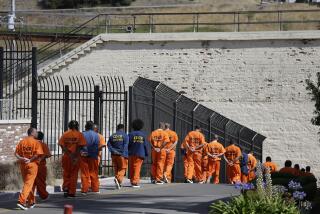How we analyzed California’s crime rates in an era of justice reform
For an analysis of California’s crime rates since the state began enacting major justice reform in 2011, The Times and the Marshall Project used crime data from two sources: the Open Justice portal from the state’s Department of Justice, which provides crime data for California alone, and the FBI’s Uniform Crime Reporting program, which provides data for all 50 states.
To compute crime rates — defined as the number of crimes per 100,000 inhabitants — we also needed population figures. The FBI program includes population numbers along with its crime data, but the California Department of Justice does not, so we obtained the state’s population and that of its 58 counties from the U.S. Census Bureau’s annual and intercensal population estimates.
The crime data on California obtained from the FBI program should, in theory, be the same as the information provided by the state Department of Justice, since it is this agency that submits crime data to the FBI. There are always minor differences, however, probably generated by the standardizing of the data by the FBI to make them consistent across the 50 states.
We confirmed that these differences are not significant enough to alter the conclusions of the analysis. To be consistent, however, the analysis used the FBI data when drawing comparisons between California and the rest of the country, and data from the state Department of Justice when we analyzed what has happened inside the state alone.
All of the data and code used for our analysis can be found in this GitHub repository.
More to Read
Start your day right
Sign up for Essential California for news, features and recommendations from the L.A. Times and beyond in your inbox six days a week.
You may occasionally receive promotional content from the Los Angeles Times.






